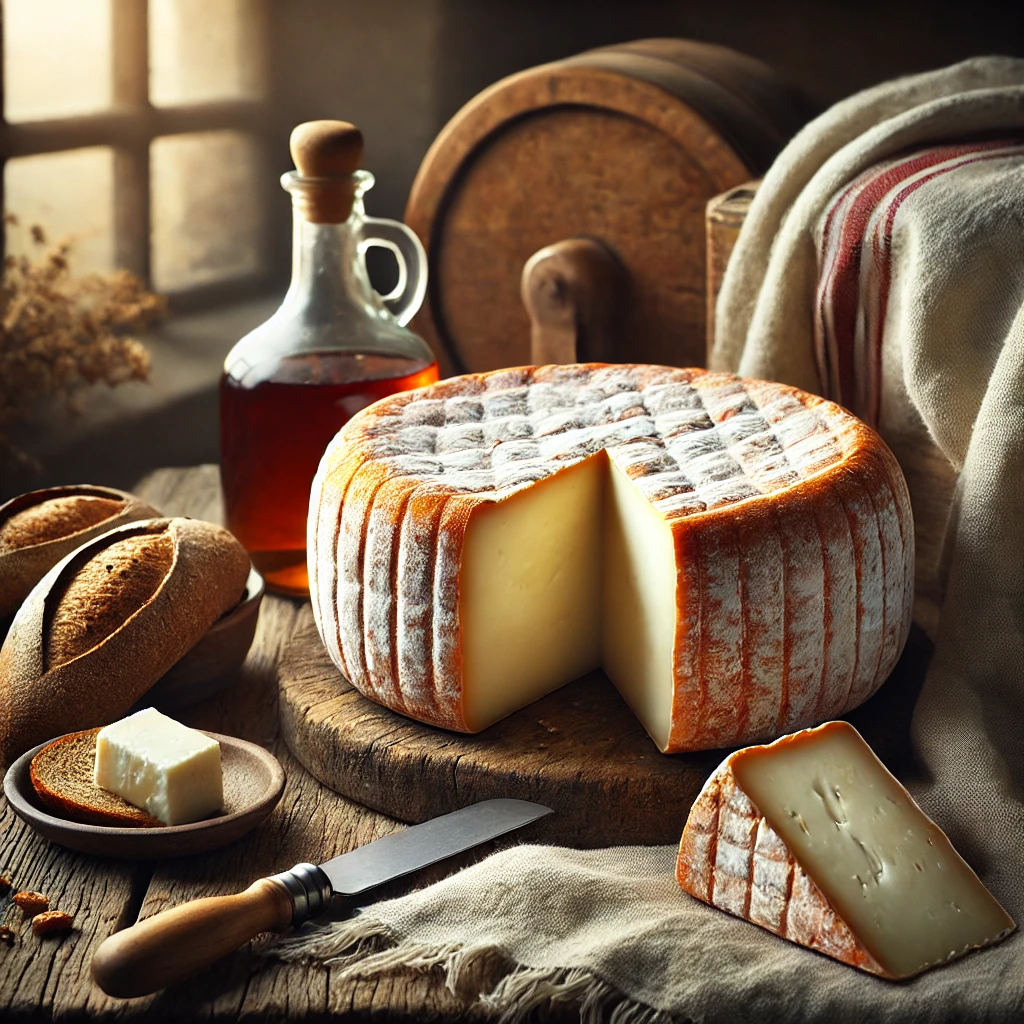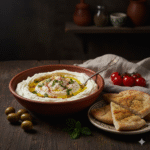Belgium is famous for its chocolate, beer, and waffles—but its cheese heritage is equally rich, especially in the eastern province of Liège. Among its most prized dairy treasures is Remoudou, a unique washed-rind cheese known for its bold aroma, creamy body, and centuries-old tradition. Though less internationally known than Herve cheese, Remoudou holds a special place in Belgian gastronomic culture, offering cheese lovers a deeper, more rustic experience.
This complete guide explores Remoudou from every angle—its origins, flavor, texture, production, uses in cooking, pairings, nutrition, and how it compares to cheeses like Romadur and Herve. Whether you’re a cheese enthusiast, a food blogger, or simply curious, this article will give you a full understanding of this remarkable Belgian cheese.
What Is Remoudou Cheese?
Remoudou is a washed-rind Belgian cheese produced primarily in the Herve region of Wallonia. Known for its pungent aroma and deep, savory flavor, it belongs to the same family as Herve cheese but has its own distinctive taste and history.
The cheese is traditionally made from cow’s milk and washed repeatedly during aging, developing its signature orange-brown rind and strong scent.
Why Is It Called “Remoudou”?
The name originates from the Walloon word “remoud,” referring to milk collected after the first milking—a richer, fattier milk that leads to a more intense cheese. Historically, this made Remoudou denser, creamier, and stronger than other cheeses from the region.
A Brief History of Remoudou
The origins of Remoudou date back to rural Wallonia, where small farms relied on dairy production for both income and preservation. Like many washed-rind cheeses, Remoudou was created as a solution to preserve milk during colder seasons.
By the 18th and 19th centuries, it became a popular cheese in Herve, a region renowned for strong-smelling cheeses. In fact, Remoudou and Herve were once considered “cousin cheeses,” often sold in the same markets.
However, Remoudou remained less commercialized, and this artisanal nature contributed to its rarity today. Many Belgian cheese lovers still see Remoudou as a historical, rustic specialty that represents authentic Wallonian dairy craftsmanship.
Remoudou vs. Herve: What’s the Difference?
Since Remoudou is often mentioned alongside Herve cheese, here’s a clear comparison:
| Feature | Remoudou | Herve Cheese |
|---|---|---|
| Milk | Cow’s milk | Cow’s milk |
| Texture | Creamy, soft, slightly firmer | Very soft, sticky |
| Aroma | Strong, pungent | Very strong, ammonia-like |
| Flavor | Savory, meaty, slightly spicy | Strong, tangy, sharp |
| Rind | Washed, orange-brown | Washed, orange-red |
| Production | Smaller scale | Larger commercial production |
Verdict:
If Herve is the “king” of strong Belgian cheese, Remoudou is its more rustic, artisan sibling—bold but slightly less aggressive, with deeper dairy notes.
What Does Remoudou Taste Like?
Remoudou is not a cheese for the faint-hearted—but it rewards those who appreciate powerful flavors.
Taste Profile
-
Primary notes: Savory, meaty, and slightly spicy
-
Undertones: Earthy, fermented, and faintly sweet
-
Aftertaste: Long-lasting and creamy
-
Aroma: Strong, pungent washed-rind scent
Remoudou’s flavor intensifies as it ages:
-
Young Remoudou: Creamy, milder, more buttery
-
Aged Remoudou: Pungent, spicy, and deeply aromatic
Texture
-
Soft and creamy interior
-
Smooth but firm enough to slice
-
Sticky rind that adds complexity
If you enjoy cheeses like Epoisses, Limburger, Taleggio, or Romadur, you will appreciate Remoudou’s depth.
How Is Remoudou Made?
Remoudou follows a traditional washed-rind cheese-making process.
1. Milk Selection
Cow’s milk—sometimes richer milk produced after early-morning milking—is used.
2. Curdling
Rennet is added to thicken the milk.
3. Cutting and Draining the Curd
Curds are cut into pieces, then drained to remove whey.
4. Molding & Pressing
The curds are placed into molds to form small rectangular or round shapes.
5. Brining
Salt is added either via dry salting or immersion in brine.
6. Washing
During aging, the cheese is washed with:
-
Brine
-
Beer
-
Specialty bacteria solutions (like Brevibacterium linens)
This develops the iconic orange-brown rind and sharp aroma.
7. Aging
Remoudou is aged 4–8 weeks, depending on desired intensity.
Uses of Remoudou Cheese
Remoudou’s strong flavor makes it ideal for bold culinary applications.
1. On Bread or Crackers
The simplest and most traditional way to enjoy Remoudou is spread on dark bread with butter.
2. In Belgian Cooking
Remoudou is used in:
-
Rustic sandwiches
-
Cheese platters
-
Gratin dishes
-
Warm potato dishes
-
Savory pancakes
3. Melted Dishes
Its semi-soft nature makes it excellent for:
-
Fondue
-
Baked cheese recipes
-
Melted sandwiches
4. Breakfast or Supper Plate
Belgian households often serve Remoudou with:
-
Mustard
-
Gherkins
-
Cured meats
-
Fresh fruit
5. Beer Pairing
Belgium’s beer culture pairs perfectly with its cheese tradition.
Best Pairings with Remoudou
Beer Pairings (Most Recommended)
-
Trappist ales
-
Dubbel
-
Strong dark ales
-
Saison
-
Lambic
These beers balance the cheese’s strong aroma with their maltiness and acidity.
Wine Pairings
Washed-rind cheese demands bold wines:
-
Gewürztraminer
-
Riesling (off-dry)
-
Jura whites
-
Natural wines with funk
Food Pairings
-
Dark rye bread
-
Apples and pears
-
Caramelized onions
-
Belgian mustard
-
Roasted vegetables
Romadur Cheese vs. Remoudou
Many people searching for Romadur cheese wonder how it compares to Remoudou.
Romadur (Romadour)
-
German or Austrian origin
-
Soft, pungent washed-rind cheese
-
Similar aroma but milder flavor
Key Differences
| Feature | Remoudou | Romadur |
|---|---|---|
| Origin | Belgium | Germany/Austria |
| Texture | Slightly firmer | Very soft |
| Aroma | Strong | Strong but less sharp |
| Flavor | Savory-spicy | Mild, creamy |
Romadur is often recommended as a gentler introduction to washed-rind cheeses, while Remoudou is considered more traditional and intense.
Nutrition Facts of Remoudou
Per 100g (approximate):
-
Calories: 280–330
-
Protein: 18–20g
-
Fat: 24–28g
-
Carbohydrates: 1–3g
-
Calcium: High
-
Sodium: Moderate-high
Health Benefits
✔ High in protein
✔ Rich in calcium
✔ Contains probiotics (from rind bacteria)
✔ Nutrient-dense energy source
Like other washed-rind cheeses, it’s best enjoyed in moderation due to salt and fat content.
Where to Buy Remoudou Cheese
Remoudou is rarer today, but you may find it in:
-
Belgian specialty cheese shops
-
Online European cheese retailers
-
Gourmet stores carrying Herve-style cheeses
-
Belgian farm markets (best for authenticity)
Searching “Remoudou cheese” or “Herve Remoudou” often yields regional producers.
FAQ About Remoudou
1. What is Remoudou?
A strong, washed-rind Belgian cheese known for its savory, pungent flavor.
2. How does Remoudou taste?
It has a bold, meaty, spicy flavor with a creamy texture.
3. Is Remoudou the same as Herve cheese?
No, but they are related. Remoudou is slightly firmer and less commercialized.
4. What is the origin of Remoudou?
It comes from the Herve region in Wallonia, Belgium.
5. What cheese is similar to Remoudou?
Romadur, Limburger, Epoisses, and Herve cheese.



